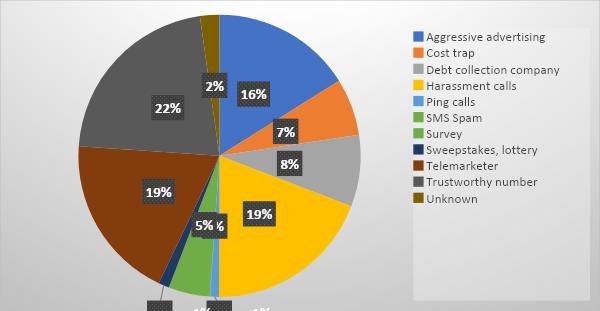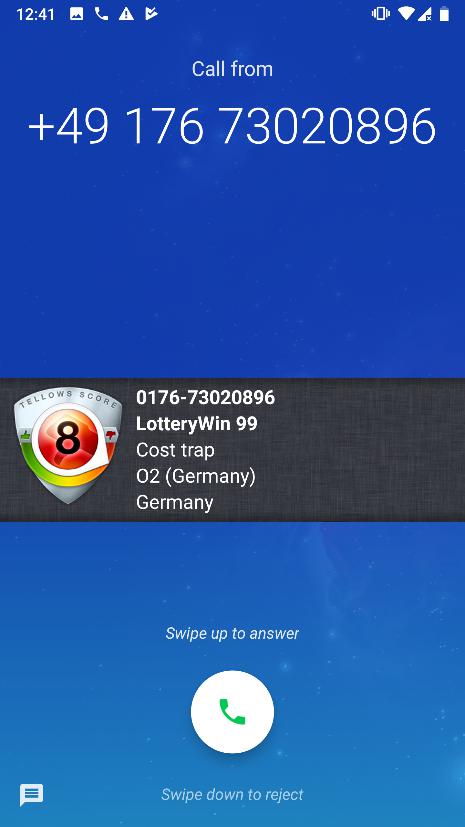Telephone spam is becoming all too common. More and more people complain about receiving unwanted calls from unknown numbers at inconvenient times of the day. What’s more, it’s not always just a simple inconvenience. Some spam calls are in fact fraudulent attempts to steal your personal data or money.
What sort of spam calls are there?
At the top of the list are of course those from telemarketers. These call us for a variety of reasons. Sometimes this is completely innocent, for example, to sell contract upgrades or renewals to existing customers. Other times, however, these callers call strangers to sell products or services and won’t take no for an answer. This also begs the question of how they came to have your details in the first place!
The online platform for phone number reverse search, Tellows, has carried out research to investigate which types of callers are the most reported across its website and apps. Active in over 50 countries, Tellows has monitored caller type statistics for its 8 domains with the most traffic.
As you can see from the chart below, marketing-related calls accounted for 38% of reports on the Tellows website in 2019. Harassment calls also made up a large proportion of user reports.

When are these calls dangerous?
Some calls are completely innocent, but others can be incredibly dangerous. Fraudsters imitate all kinds of figures to gain your trust, not only businesses but also the police and tax agencies. This means that you really can never completely trust that the person on the other end of the line is who they say they are.
If the person asks for personal data or bank details you should definitely consider hanging up the phone and think twice about giving this information if you are not completely sure that you can trust whoever you are speaking to. Once you have given this information to a possible fraudster, who knows what will happen to your details or your money?
Who is at risk of scams?
In short, everyone. Nobody is completely safe from the risk that fraudsters present. However, certain groups are targeted more often than others, for example, senior citizens. Some callers have genuinely frightening premises for calling, for example threatening people with arrest if they don’t pay a sum of money, or claiming that they have not paid the correct amount of tax. It is therefore not so surprising that so many people of all ages fall for these tricks.
The best piece of advice would be to hang up the phone if you are in any doubt about the identity of the caller. You can always ring the organization back using their official phone number as found online.
What are the latest scam tactics?
Scammers currently seem to favor SMS messaging as a method of luring their victims. Using this method, they can provide people with an ‘official’ number to call or a link to click, and any of these would, of course, lead to more temptation to reveal personal or financial details.
SMS fraud is particularly threatening because it often seems more realistic than scams over the phone. Short messages can sound much more official than phone calls, especially if they are from a ‘bank’. They can also cause more panic given that they often include a call to action, often in the form of a (usually financially) risky situation that the receiver must respond to.
How can you protect yourself?
If you use a smartphone it is particularly easy to protect yourself against these tricksters. Apps such as Tellows offer you a multitude of features that allow you to find out who is calling before you even pick up the phone.
One of the features that sets Tellows apart is its Caller ID function. Through this, users can find out who is calling before they answer the phone. Details provided by the global community are displayed on the screen as the phone rings. These include the Tellows score, which shows the average community rating, alongside the name and location of the caller, if this information has been provided.
Tellows also offers call blocking. Premium users benefit from automatic blocking of all numbers that have been rated negatively by the community. Free users can manually block nuisance callers quickly and easily by selecting numbers from which they want to block calls.

The app is in the process of being redesigned and upgraded. New features that have been added already include the ability to view SMS sender details (if the number is unknown) along with a complete redesign of the menu and settings page.